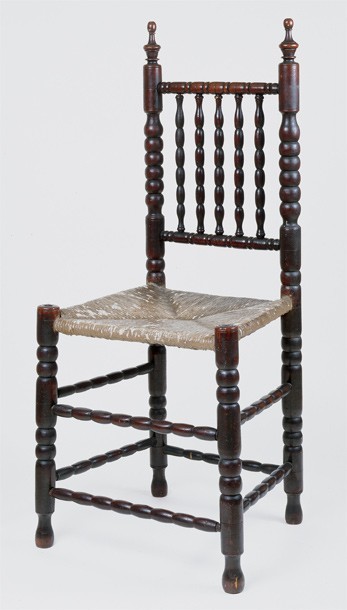
Side chair, New York, 1660-1720. Cherry with unidentified secondary wood. H. 42", W. 18", D. 13 1/2". (Private collection; photo, Helga Studio.)
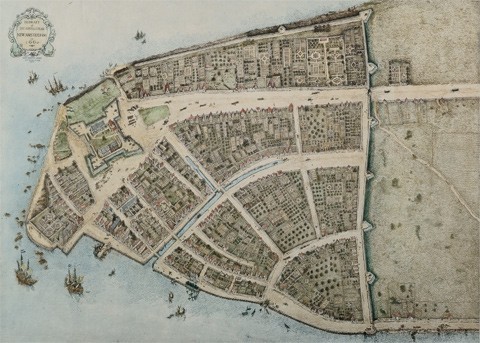
I. N. Phelps Stokes, Redraft of the Castello Plan of New Amsterdam in 1660, New York, 1916. Color gravure on paper. 14 3/8" x 19 1/4". (Courtesy, J. Clarence Davies Collection, Museum of the City of New York.)

Detail of the map illustrated in fig. 2, showing the residences of (a) Lourens Andrieszen van Boskerk, (b) Frederick Arentszen Blom, and (c) David Wessels.
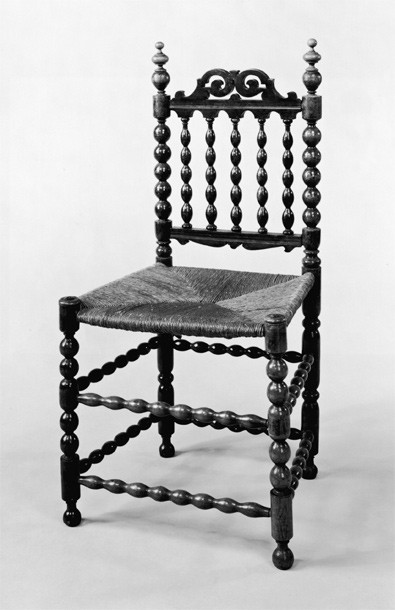
Side chair, northern Netherlands, 1650-1700. Walnut with unidentified secondary wood. H. 40 1/8", W. 18 1/8", D. 15 3/4". (Courtesy, Rijksmuseum.)
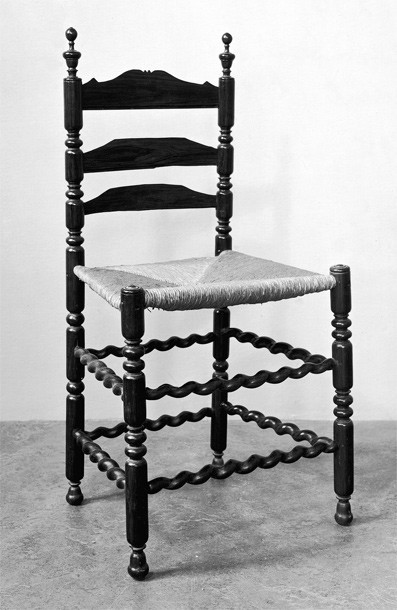
Side chair, northern Netherlands, ca. 1700. Rosewood and walnut with unidentified secondary wood. H. 37 1/2", W. 18 1/8", D. 14 3/4". (Courtesy, Rijksmuseum.)
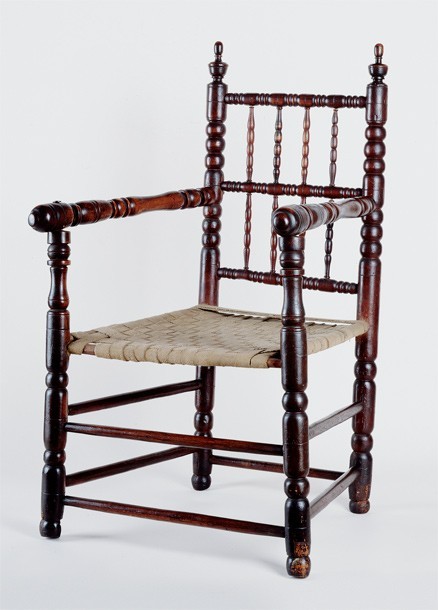
Armchair, New York, 1660-1720. Maple with unidentified secondary wood. H. 40", W. 23", D. 19". (Courtesy, Morristown National Park, National Park Service, U.S. Department of the Interior: photo, Gavin Ashworth.) Several of the vertical spindles and stretchers are replaced.
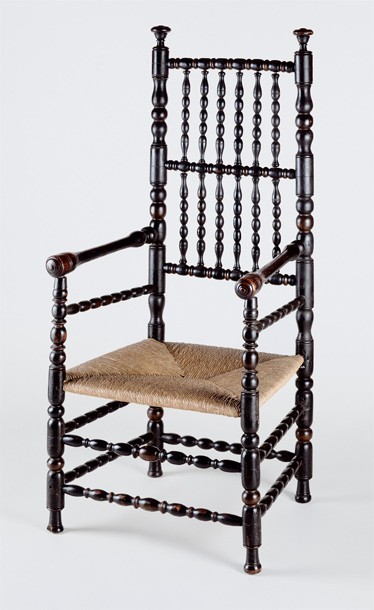
Armchair, New York, 1660-1720. Maple, cherry, and ash with unidentified secondary wood. H. 50 3/8", W. 23 1/4", D. 18 3/4". (Courtesy, Albany Institute of History and Art, Rockwell Fund; photo, Gavin Ashworth.) This chair reputedly descended in the Hendrickson family of Flatbush. With two tiers of back spindles and unusually complex post turnings, this chair is a superb example of the stoelendraaier's art. One arm and several spindles are replaced.

Detail of the left arm and front post of the armchair illustrated in fig. 6. (Courtesy, Morristown National Park, National Park Service, U.S. Department of the Interior: photo, Gavin Ashworth.)

Armchair, probably southeast Virginia, 1670-1720. Cherry with unidentified secondary wood. H. 41 3/4", W. 23 1/2", D. 23 1/2". (Collection of the Museum of Early Southern Decorative Arts, Old Salem Museum & Gardens.)
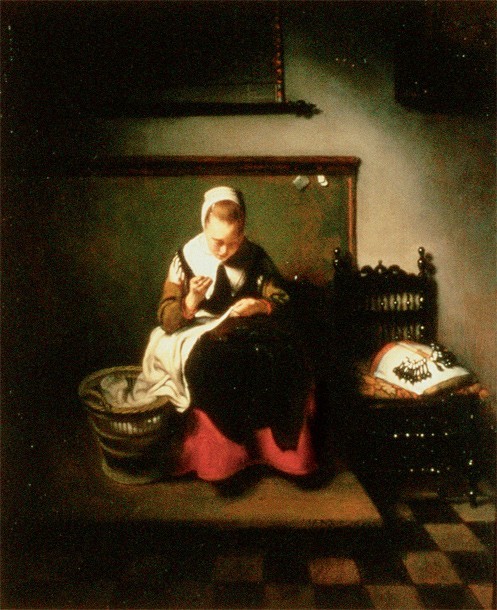
Nicolaes Maes, A Young Woman Sewing, 1655. Oil on panel. 21 3/8" x 17 1/2". (Courtesy, Guildhall Art Gallery, Corporation of London.)

Hendrik van der Burch, The Game of Cards, 1660. Oil on canvas. 30 1/2" x 26 1/2". (Courtesy, Detroit Institute of Arts.)

Detail showing the kitchen of a doll house, Netherlands, 1674-1682. (Courtesy, Central Museum, Utrecht.)

Side chairs, Netherlands, 1674-1682. Walnut with unidentified secondary wood. H. 4 1/3"; width and depth not recorded. (Courtesy, Central Museum, Utrecht.)

Detail of the right rear post and spindles of the chair illustrated in fig. 39. (Photo, Gavin Ashworth.)
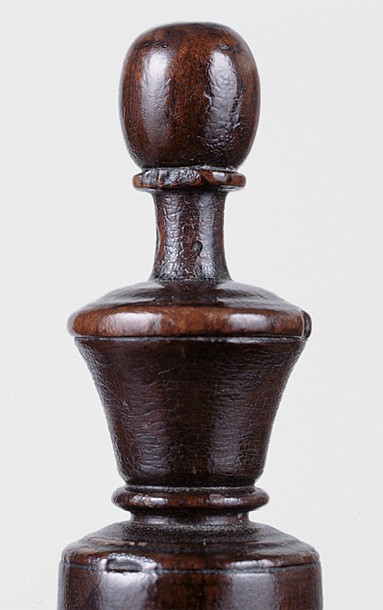
Detail of the right finial of the chair illustrated in fig. 39. (Photo, Gavin Ashworth.)
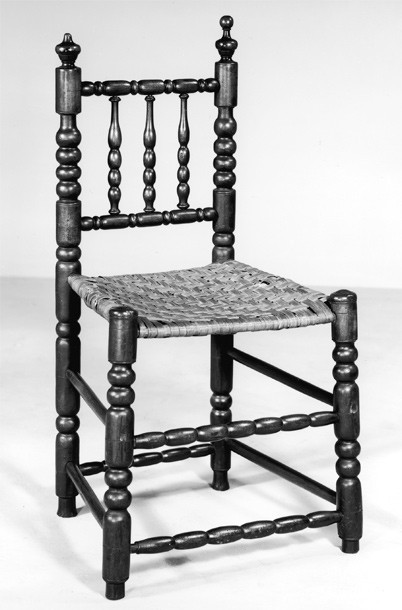
Side chair, New York, 1660-1720. Walnut with hickory. H. 30 11/16 ", W. 16 1/2", D. 13 3/8". (Courtesy, Mabel Brady Garvan Collection, Yale University Art Gallery.)
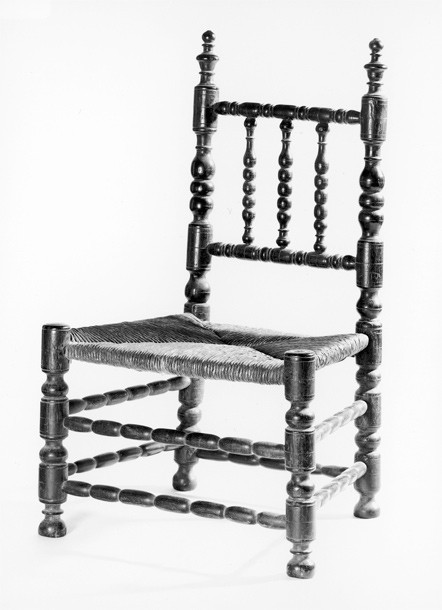
Side chair, New York, 1660-1720. Ebony with red oak. H. 26", W. 15 1/2", D. 14 1/2". (Courtesy, Winterthur Library: Decorative Arts Photographic Collection.)

Detail of a photograph of an exhibit at the bicentennial display, Albany, New York, 1886. (Courtesy, McKinney Library, Albany Institute of History and Art.)
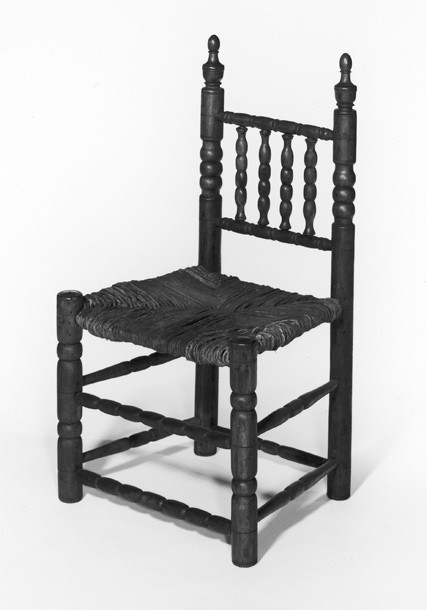
Side chair, New York, 1660-1720. Cherry with white oak. H. 32 3/8", W. 17", D. 15 1/2". (Courtesy, New York State Museum, gift of the Wunsch Americana Foundation.) The mate to this chair is illustrated in fig. 43.

Side chair, New York, 1680-1711. Cherry. H. 37", W. 19", D. 15 1/4". (Private collection; photo, Gavin Ashworth.)

Detail of the weathervane on the Dutch Reformed Church built in Sleepy Hollow, New York, in 1685. Unidentified metals. (Courtesy, Tarrytown Dutch Reform Church; photo, Gavin Ashworth.) This weathervane is a copy based on the original, which still survives in the church. Oral tradition maintains that the weathervane was presented to the church upon its completion.

Armchair, New York, 1675-1725. Maple with unidentified secondary wood. H. 36 1/4", W. 22 3/8", D. 24". (Courtesy, Brooklyn Museum of Art.)
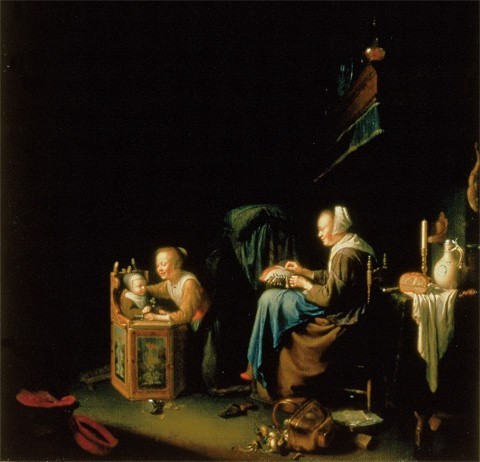
Detail of Pieter Cornelis van Slingelandt, Woman Making Lace with Two Children, Netherlands, ca. 1679. Oil on panel. 18 5/8" x 15 1/2". (Courtesy, Guildhall Art Gallery, Corporation of London.)
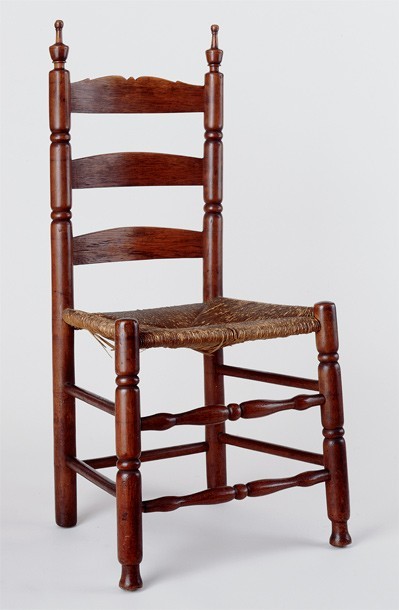
Side chair, New York or northern New Jersey, 1730-1790. Maple with unidentified secondary wood. H. 38 3/8", W. 18", D. 16". (Private collection; photo, Gavin Ashworth.)
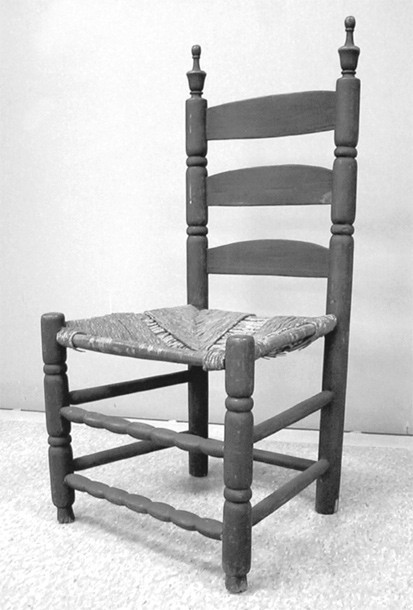
Side chair, New York or northern New Jersey, 1730-1790. Maple with unidentified secondary wood. H. 36 3/4", W. 19 1/8", D. 16". (Courtesy, Staten Island Historical Society.)

Side chair, probably Guilford-Saybrook area of Connecticut, 1680-1710. Maple and ash. H. 30 1/2", W. 17 1/4", D. 14". (Courtesy, Mabel Brady Garvan Collection, Yale University Art Gallery. )
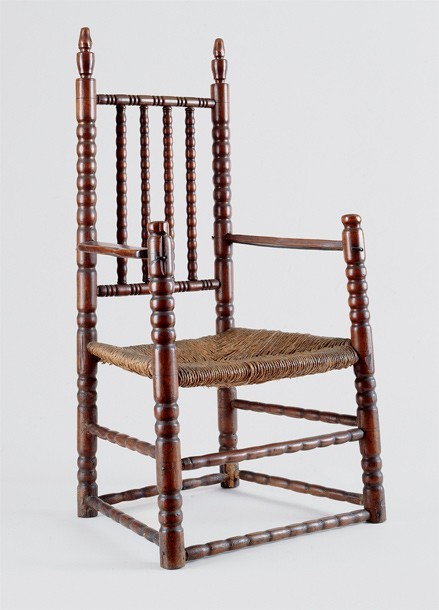
Armchair, New York, 1670-1720. Maple with unidentified secondary wood. H. 40 3/4", W. 21 3/8", D. 15 5/8". (Courtesy, Society for the Preservation of Long Island Antiquities.)
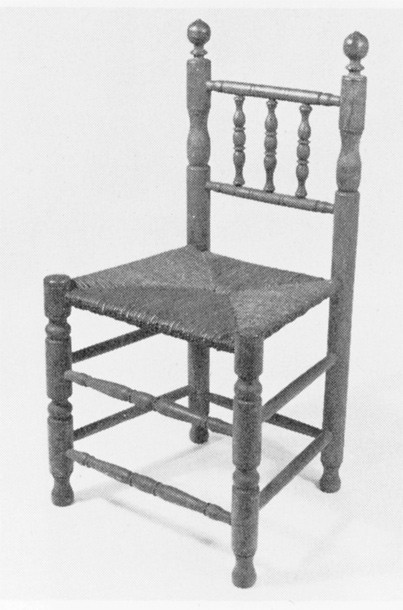
Side chair, New York, 1680-1730. Maple with unidentified secondary wood. Dimensions not recorded. (Courtesy, Sotheby's.)
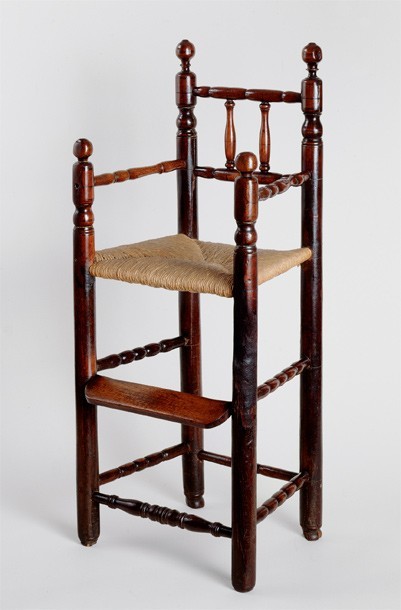
High chair, New York, 1680-1730. Maple with unidentified secondary wood. H. 35 1/2", W. 14 3/4", D. 13 1/2". (Courtesy, Albany Institute of History and Art; photo, Gavin Ashworth.) The chair is branded "RS" on a back leg. The footrest is a modern replacement.
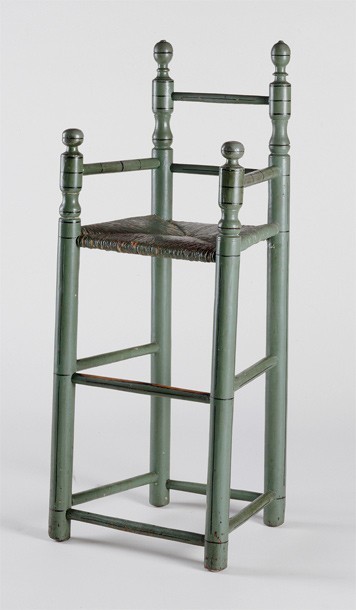
High chair, New York, 1680-1730. UnidentiWed woods; modern green paint. H. 37", W. 23", D. 12 1/2". (Courtesy, Albany Institute of History and Art; photo, Gavin Ashworth.) The back rails, stretchers, and arms may be replacements.
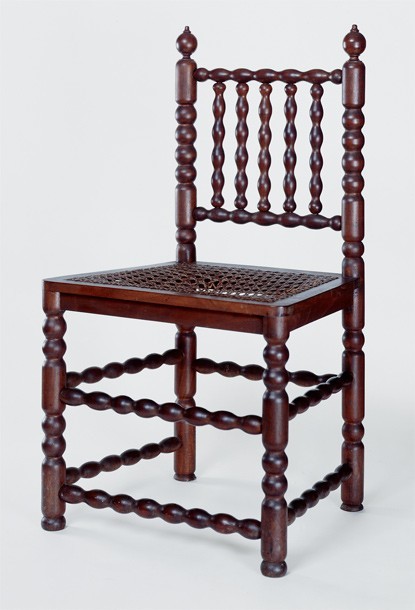
Side chair, New York, 1680-1730. Walnut with unidentified secondary wood. Dimensions not recorded. (Courtesy, Issac Royall House Museum.) The seat and seat rails are replaced.
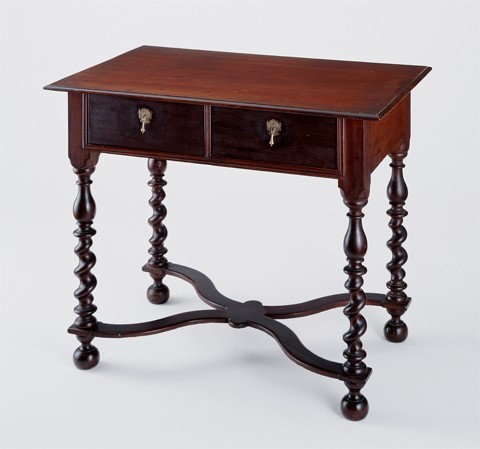
Dressing table, New York, 1680-1710. Mahogany with tulip poplar. H. 33 3/4", W. 28 1/4", D. 22 3/4". (Private collection; photo, Gavin Ashworth.)
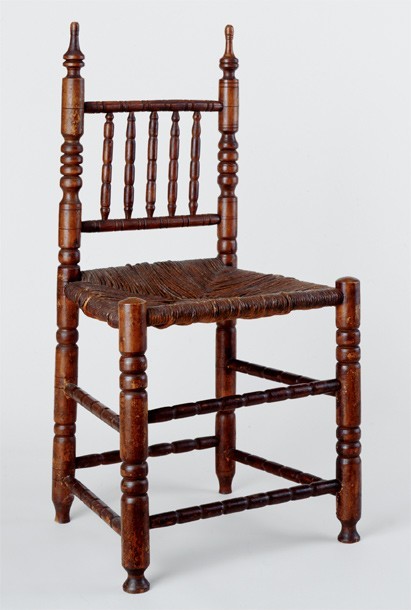
Side chair, New York, 1700-1740. Maple. H. 36 1/2", W. 18 3/4", D. 15". (Private collection; photo, Gavin Ashworth.)

Side chair, New York, 1695-1730. Maple. H. 44 3/4", W. 19 3/4", D. 16". (Courtesy, Albany Institute of History and Art; photo, Gavin Ashworth.)
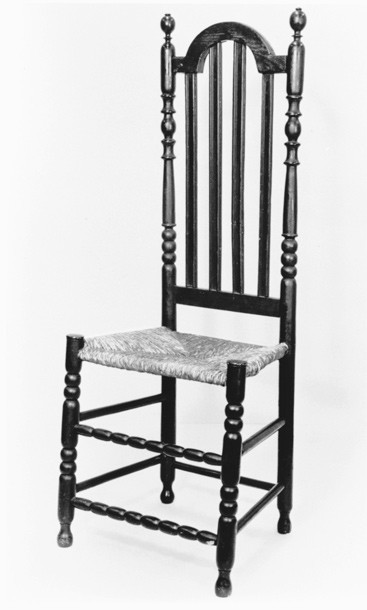
Side chair, New York, 1695-1730. Maple. H. 48", W. 18 3/8", D. 13 1/2". (Courtesy, Bergen County Historical Society.)
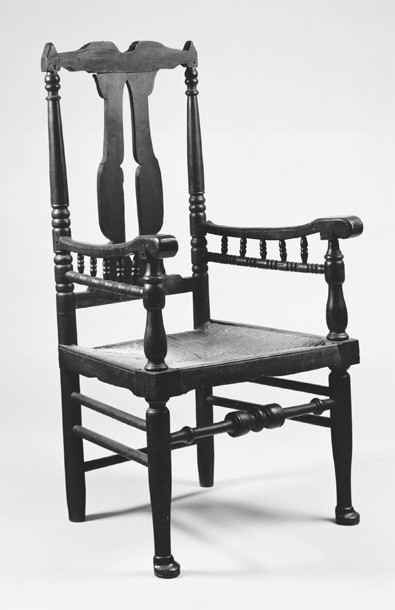
Armchair, New York, 1750-1780. Cherry. H. 47 1/2", W. 26", D. 21 1/2". (Courtesy, Metropolitan Museum of Art, gift of the Wunsch Americana Foundation.)
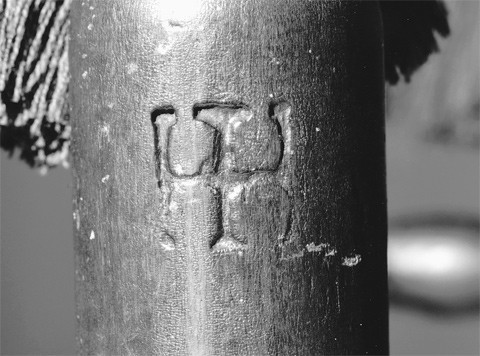
Detail of the "HH" brand on the side chair illustrated in fig. 38.
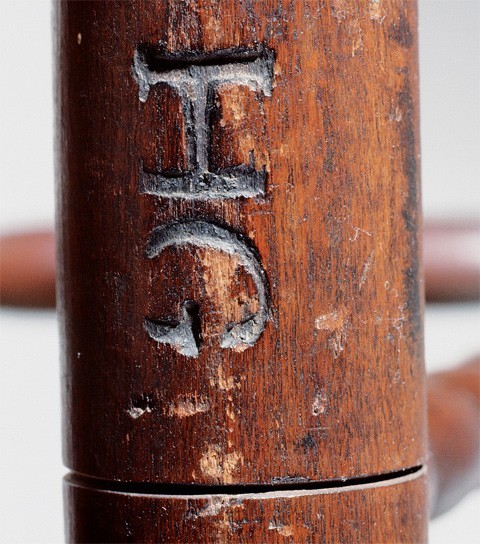
Detail of the "HG" brand on the side chair illustrated in fig. 41. (Photo, Gavin Ashworth.)
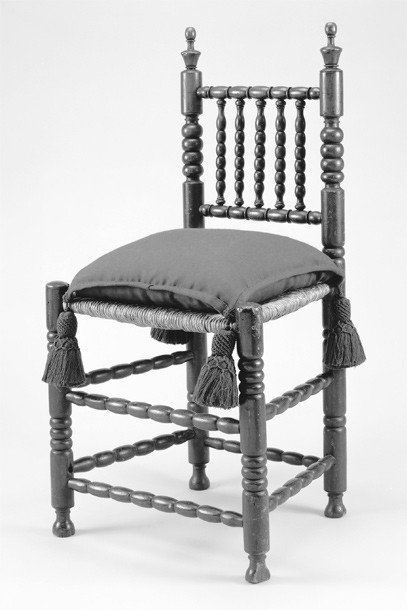
Side chair, New York, 1660-1720. Cherry with ash. H. 35 7/8", W. 18 1/2", D. 15". (Courtesy, Bayou Bend Collection, Museum of Fine Arts, Houston, museum purchase with funds from the Houston Junior Woman's Club.)
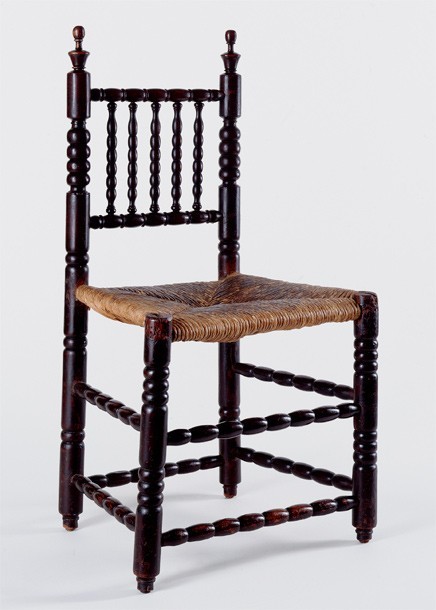
Side chair, New York, 1660-1720. Cherry with ash. H. 34 7/8", W. 18 1/2", D. 15". (Courtesy, Historic Hudson Valley; photo, Gavin Ashworth.)
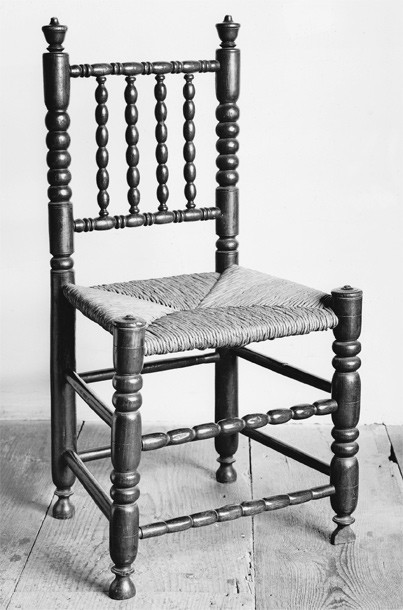
Side chair, New York, 1660-1720. Red mulberry. H. 35 1/2", W. 17", D. 14 3/4". (Courtesy, American Museum in Britain.) The finials have lost their pointed tops.
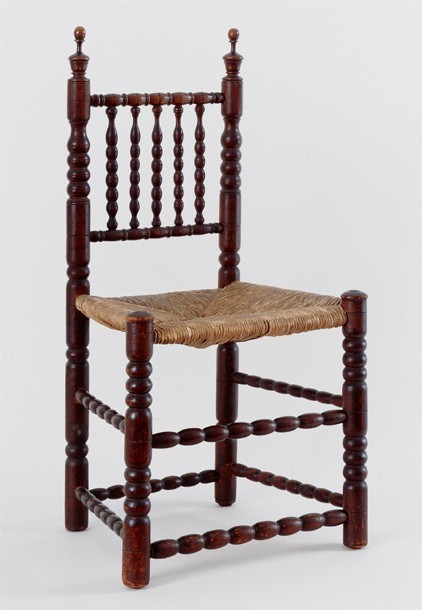
Side chair, New York, 1660-1720. Cherry with unidentified secondary wood. H. 36 1/8", W. 18 3/4", D. 14 1/2". (Courtesy, New Jersey State Museum).

Side chair, New York, 1660-1720. Unidentified woods. H. 37", W. 18 1/2", Depth not recorded. (Anderson Art Galleries, Francis P. Garvan Collection, January 8-10, 1931, lot 107.)

Side chair, New York, 1660-1720. Cherry with white oak. H. 34 7/8", W. 17 3/4", D. 15 1/4". (Courtesy, Winterthur Museum.) The mate to this chair is illustrated in fig. 18.

Side chair, New York, 1660-1720. Cherry with unidentified secondary wood. H. 37 3/8", W. 18 1/8", Depth not recorded. (Private collection; photo, Gavin Ashworth.)

Side chair, New York, 1660-1720. Cherry with white oak. H. 34 3/8", W. 18 3/4", D. 16 1/8". (Courtesy, Winterthur Museum.)
